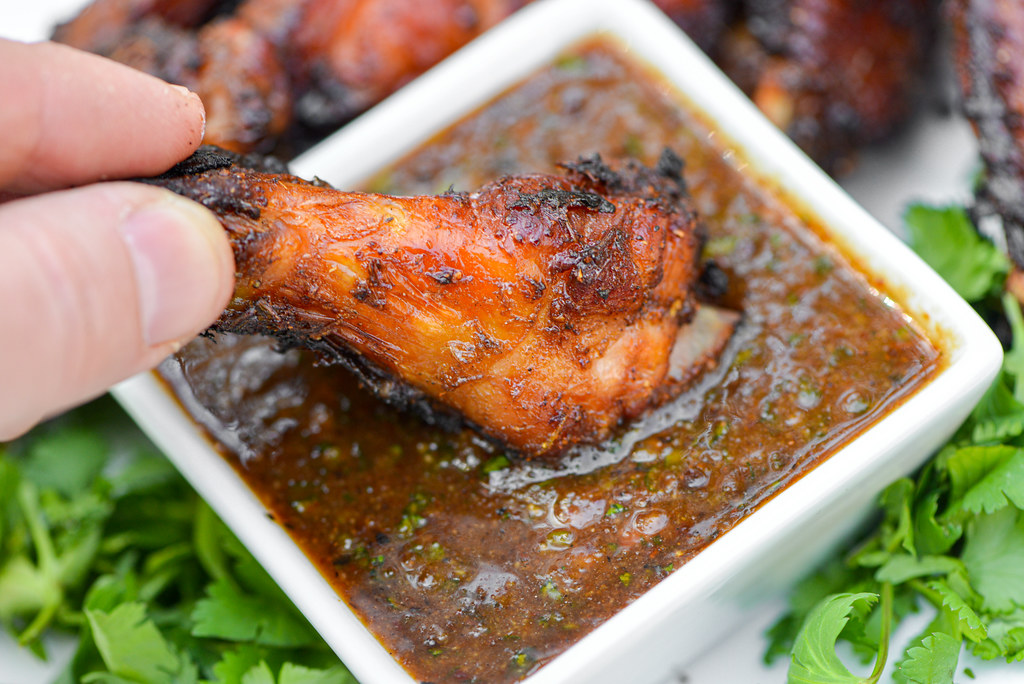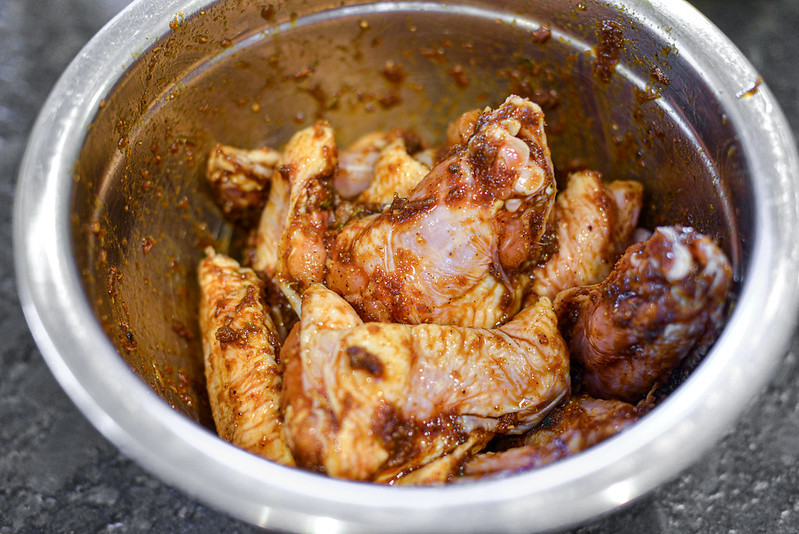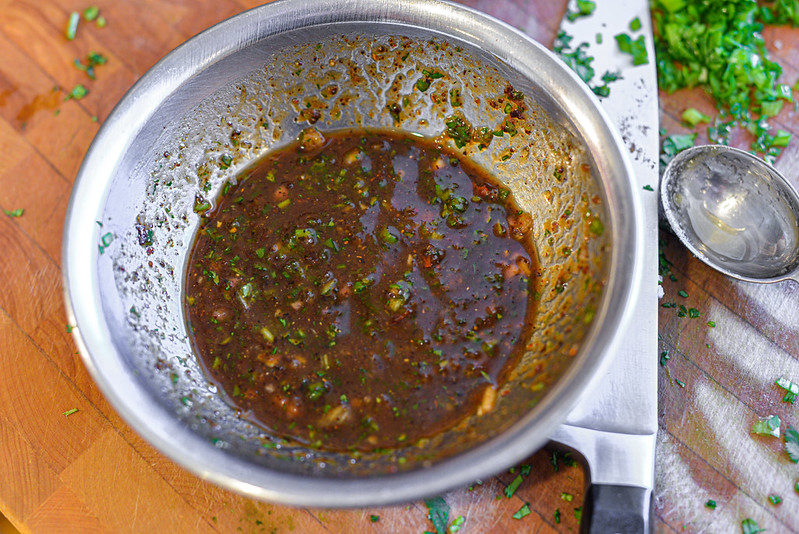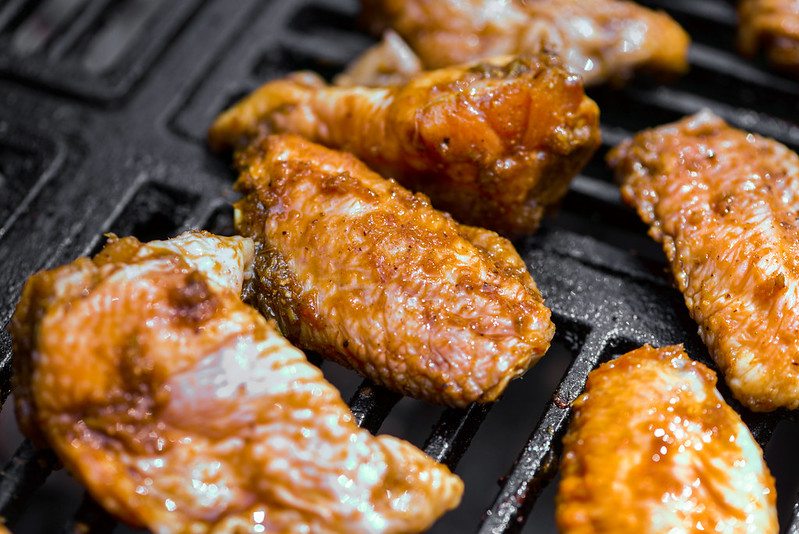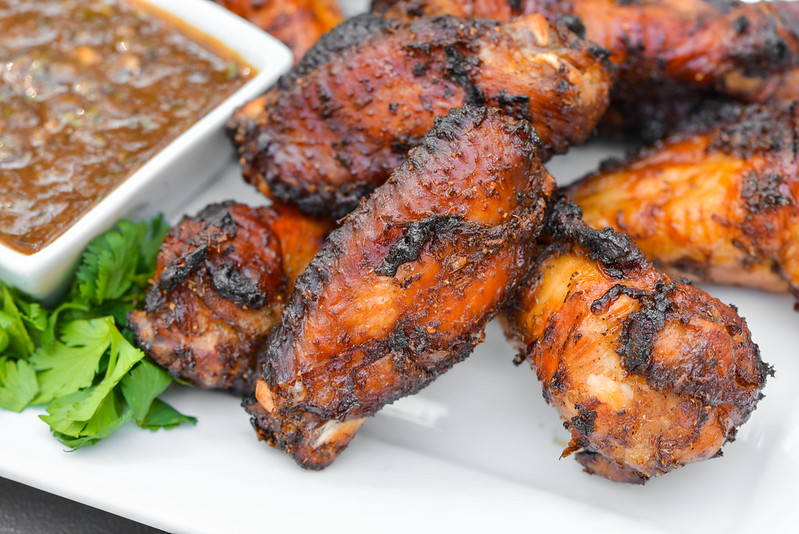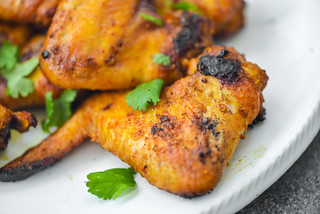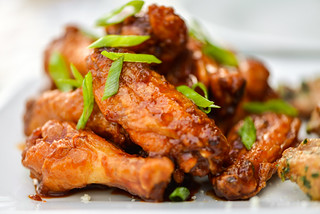Thai-influenced Gai Yang Wings
When I had an opportunity to visit Chang Mai, getting my fill of gai yang—a roast chicken popular in that region of Thailand—was high on my priority list. I got in few gai yang meals in, and while I found I had a favorite of the lot, what I was most taken with was one restaurant that served theirs with a tamarind based dipping sauce that I couldn't get enough of. I now know that sauce is called nam jim jaew, and learning to make it at home has been on a perpetual to-do list of mine for a while now, but it wasn't until the difficult last winter, when we were all pretty much confined to indoors at our own homes, that I had a vision of a warm spring day, sitting outside and enjoying a meal of gai yang with nam jim jaew along with a som tam salad and crying tiger steak too, and that's what finally drove me to make these wings on an early nice weather day in 2021.
I already have a gai yang recipe on my site, which is the primary reason I made these as wings instead of a whole chicken—I wanted to be able to share my updated gai yang recipe along with the nam jim jaew here. Looking back at my original gai yang recipe, it seemed pretty solid, but with some more years of cooking experience, I made a few improvements like first starting by toasting the dry spices to enhance their flavor a bit.
The next major change is using a mortar and pestle, instead of a food processor, to make the sauce. I've found that a food processor is never quite the same in making such harmonious pastes, nor is the flavor quite as intense as when using a mortar and pestle. I also changed up the process to individually pound down each ingredient in the marinade before moving on the the next, which I've found results in everything being thoroughly broken down.
After putting together the marinade that had a very peppery, herbal, and savory flavor, I applied it to the wings I had first patted dry with paper towels. I poured the sauce over the wings and then tossed to evenly coat all the chicken. Next, I covered the bowl and placed it in the fridge to marinate overnight.
The next day, before grilling, I whipped up the nam jim jaew, which isn't so far off from the dipping sauce in my original gai yang recipe. The primary difference is that tamarind concentrate is used as the base, giving the sauce its incredibly savory quality with a pleasant sourness that's tempered by sugar. A standard mixture of Thai seasonings that include cilantro, shallots, scallions, chili powder, and toasted rice powder give the sauce its remaining depth that brings heat and fresh touches which really make nam jim jaew a powerhouse condiment in my book.
The majority of my wing recipes focus on getting a crispy skin, but I didn't have much hope for that here since I had added liquid to the wings. It usually takes air drying the wings overnight to remove excess moisture to get crackling skin, but that wasn't the point of this recipe anyway—it was more about getting that amazing lemony and peppery gai yang flavor.
So I was left pleasantly surprised when, after the 45 minutes of required cooking, to not only find these wings a beautiful dark mahogany color, but also many of them had a pretty nice crispness to the skins too. I plated these up and took some photos really fast—so quickly that when I bit into the first wing, it was still hot enough to burn my tongue.
That was only a minor inconvenience though for chicken that tasted so great. If you taste the marinade in its raw state, it's pretty intense, but it has a way of mellowing out during cooking to deliver a light touch that's mainly salty and peppery with mellow lemongrass notes that are all well balanced with the flavor of the chicken itself. Its was only when the chicken got a dunk in the nam jim jaew that the strong intensity of flavor associated with many Thai dishes came out—a heavy handed tartness, freshness, and heat all joined the party. Interspersing wings with helpings of cool and crunchy som tam salad made for quite a perfect meal on a warm day outside in my mind, and after such a long and dim winter, it also brought some added measure of hopefulness and happiness. That makes it a fitting recipe to start off 2022 with too, since those are things I need to remember are on the horizon as we enter into what may be another long and lonely winter.
